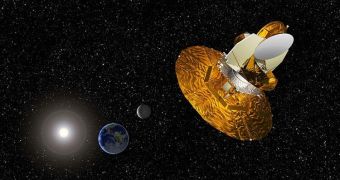A recent analysis carried out by physicists Ghazal Geshnizjani, Will Kinney and Azadeh Moradinezhad Dizgah, all at the University at Buffalo, suggests that inflation is indeed the most likely explanation for how the Universe behaved in its infancy.
The theory itself is remarkably simple, even though it does require some leaps of faith and imagination from time to time. In any case, it's a lot easier to come to terms with it than its alternatives, experts say.
Explaining the distribution of matter across the entire Cosmos is no easy feat. Yet, this is precisely what cosmologists need to do, if they are to have any chance of understanding how the Universe came to be.
What inflation proposes is that the entire Cosmos expanded with extreme speed immediately after the Big Bang, similarly to how a balloon does once hooked up to an air pump. This started to occur tiny fractions of a second after the Universe sprung into being, and continues to happen now.
What the UB investigators were interested in was figuring out which of the most widely proposed cosmic theories is the most likely to be true. They determined that inflation was the most sensible and complex of these explanations, and the one that had the most evidence to support it.
The idea was first proposed about 32 years ago, and was based on matter distribution data sent back by the NASA Wilkinson Microwave Anisotropy Probe (WMAP). The spacecraft studies the Cosmic Microwave Background (CMB), residual light left over from the Big Bang, Space reports.
One of the main tenets in the inflation model is that the Universe grew by a factor of 10^78 in just a second. Contrary to popular belief, the Big Bang was not an explosion, but an extremely rapid inflation.
“The takeaway result here is that this idea of inflation turns out to be the only way to do it within the context of standard physics. I think in many ways it puts the idea of inflation on a much stronger footing, because the available alternatives have problems, or weirdnesses, with them,” Kinney says.
He explains that one of the two aforementioned alternatives requires that the speed of sound exceed the speed of light, whereas the latter calls for the existence of extremely-high energies – which would require string theory to describe them.
One of the main advantages of the inflationary model is that it does not require any type of exotic new physics. Particle physics is enough to explain it in its entirety, and no supraluminal speeds are needed.
Details of the new analysis can be found in the November 2011 issue of the respected Journal of Cosmology and Astroparticle Physics.

 14 DAY TRIAL //
14 DAY TRIAL //